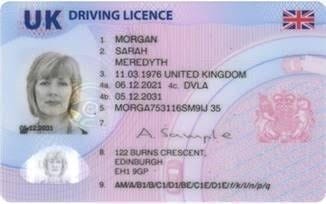Driving Safely – How to Improve Road Safety and Save on Insurance. Driving can be a transformative skill to learn, allowing you greater independence and freedom of movement – but learning to drive also means shouldering the risk of accident or injury on the road. In the UK, five people die every 24 hours as a result of a road collision or accident, with a further 84 injured. Safe driving is a crucial component of road safety, but what does it mean to drive safely?
Driving in the UK
Naturally, driving is well-litigated as a practice in the UK. Rigorous testing and eligibility rules are utilised to control the flow of new drivers onto the roads, and legal frameworks require drivers to meet certain compliance requirements even after attaining a driving license.
Save for a specific concession, the vast majority of people in the UK can only drive when they are at least 17 years of age – including for lessons. In order to attain a license, a driver must pass a driving test with two components: theory, and practical. The theory test is a sit-down exam that tests knowledge of road laws and driving etiquette, as well as hazard perception; the practical test is a hands-on assessment of your skill and ability behind the wheel.
There are different classes of driving license for which you can test. If you obtain a license to drive an automatic car, you would not be legally allowed to drive a manual car. You would need to upgrade your license in order to be able to do so, unless you initially learned to drive manual and applied for a manual driving license.
There is no upper age limit for driving or learning to drive, but driving licenses expire when a driver reaches 70, after which older drivers must apply to renew their license every three years. This allows for the regulation of road users with regard to safe driving.
Insurance and Legality
Car insurance is a legally required provision for drivers in the UK, so as to protect, at minimum, third parties in any road traffic accident. It would be worth checking what your car insurance covers as a matter of priority, in order to ensure that your plan reflects what you would like covering in case of an accident. Of course, safe driving practice should dramatically reduce the chance that you will need to claim on said policy.
How to Drive Safely
Keeping distance is one of the more essential tips for safe driving. Stopping distances can be hard to estimate, and poor weather conditions can lengthen stopping distances significantly. Controlled acceleration and braking are just as important; rather than braking hard for, and accelerating away from, traffic lights, coasting to a stop and gradually accelerating are far safer – and far less taxing on the engine.
Hazard perception and fast reaction times can be instrumental to avoiding accident and injury. To this end, you should only be driving when fully awake and alert. If you feel yourself tiring, you should stop to take a rest break at the earliest convenience. By this same token, you should keep distractions to a minimum, so as to maintain full attention to the road.
Hope you’ve found our article, Driving Safely – How to Improve Road Safety and Save on Insurance useful.
Thank you for taking the time to read my post. If you’d like to add a comment or thought on this post, please use the comments section below. I can also be contacted via the online contact form. Keep up to date with the latest news on social media.


